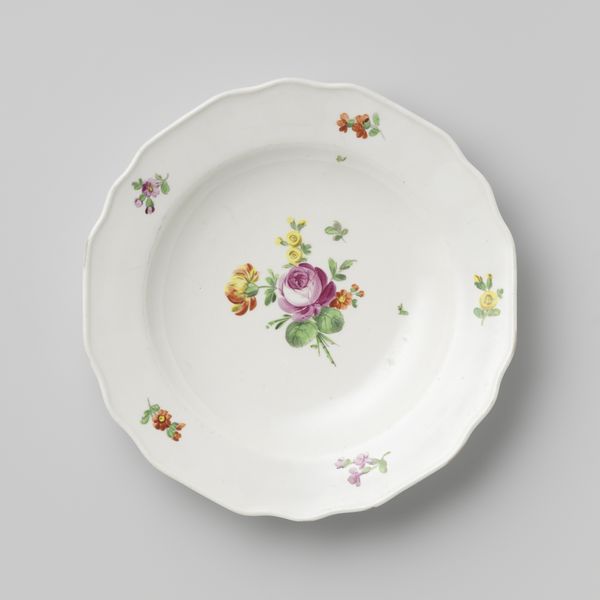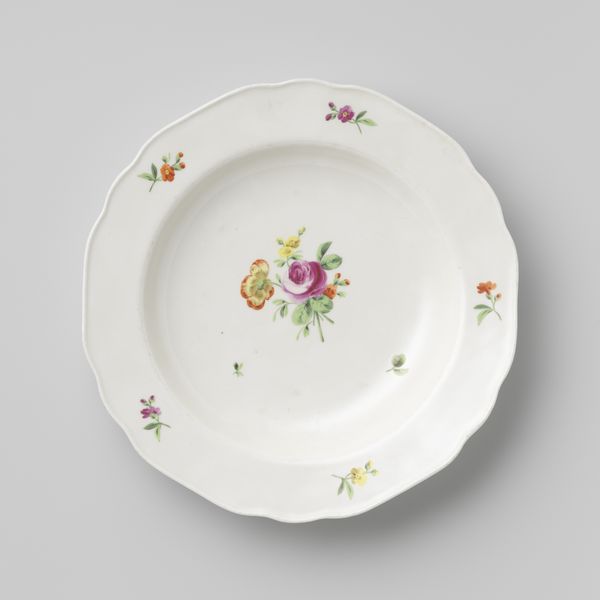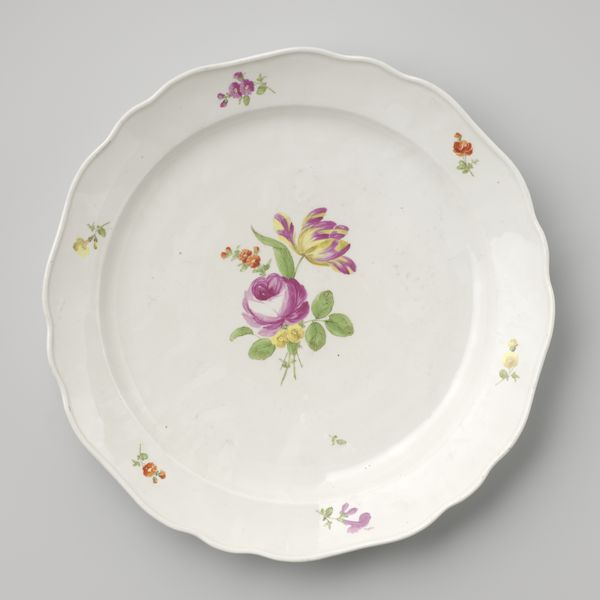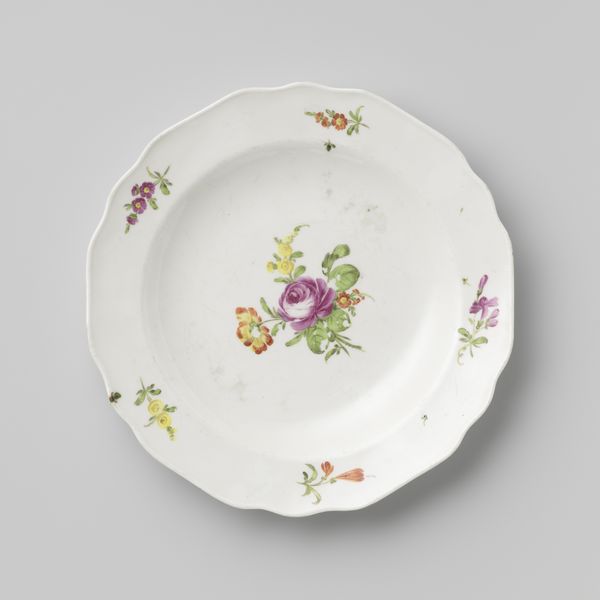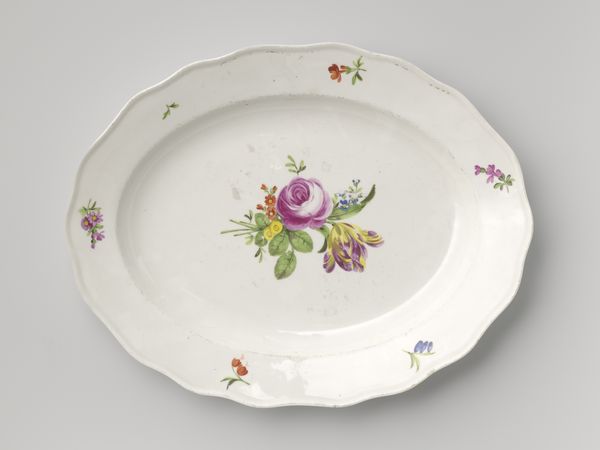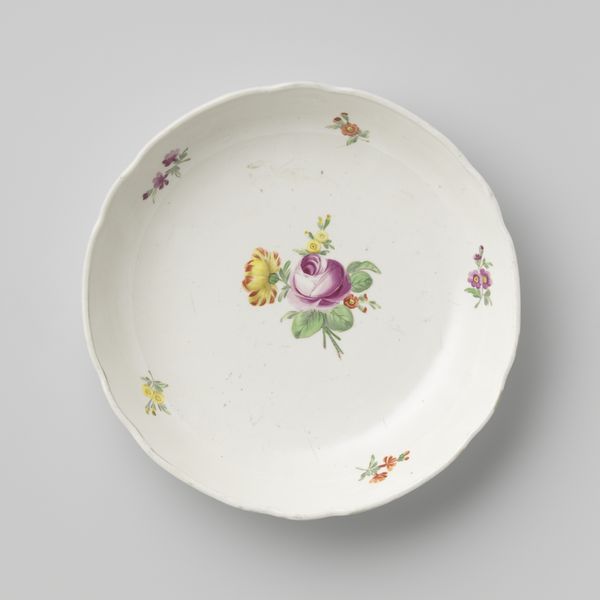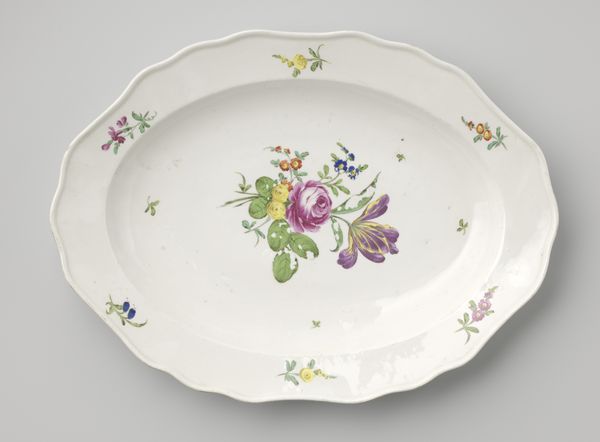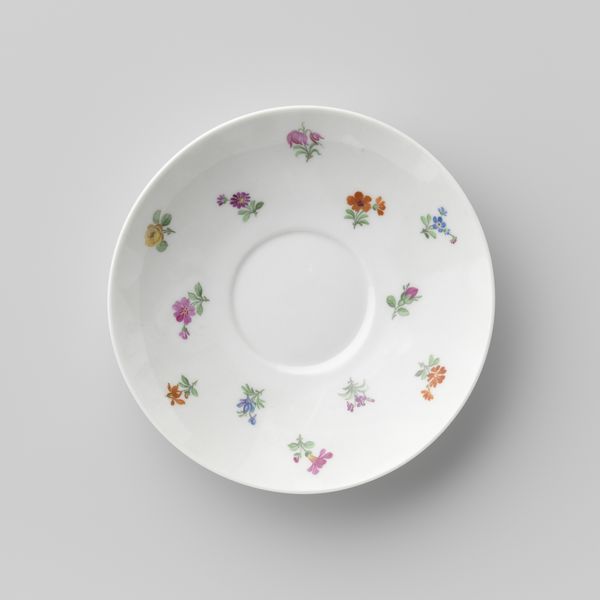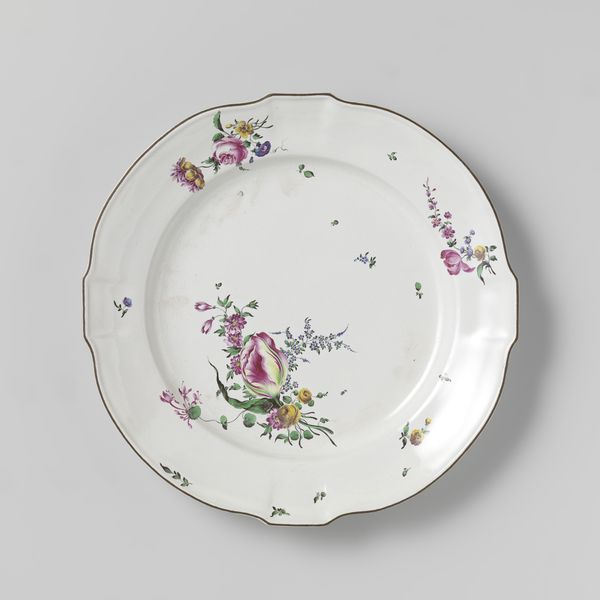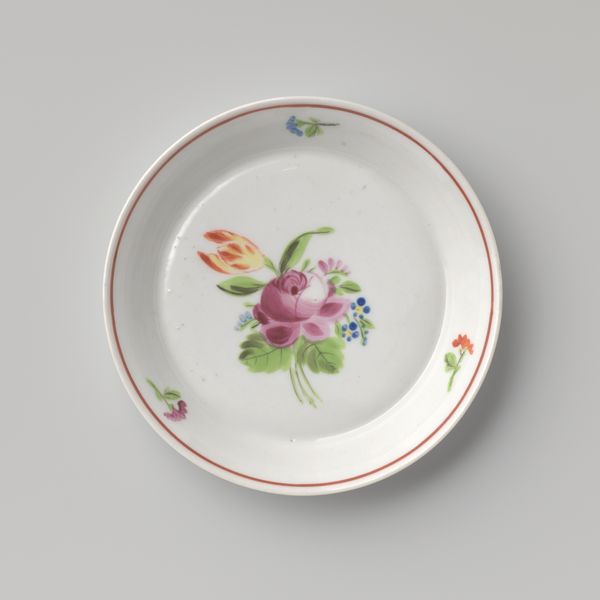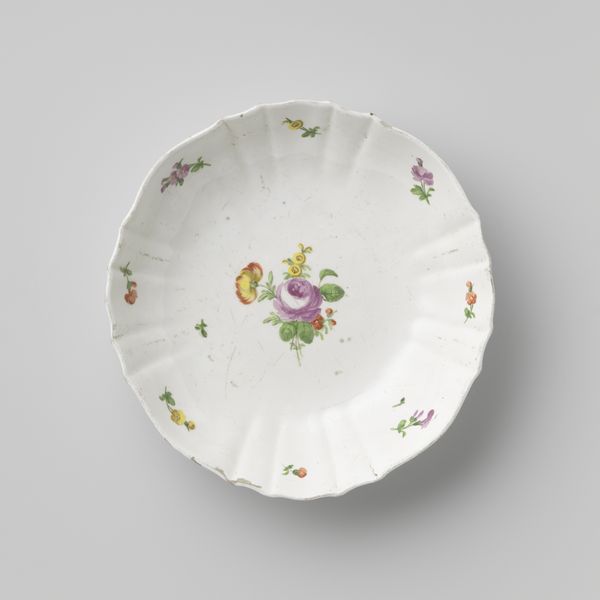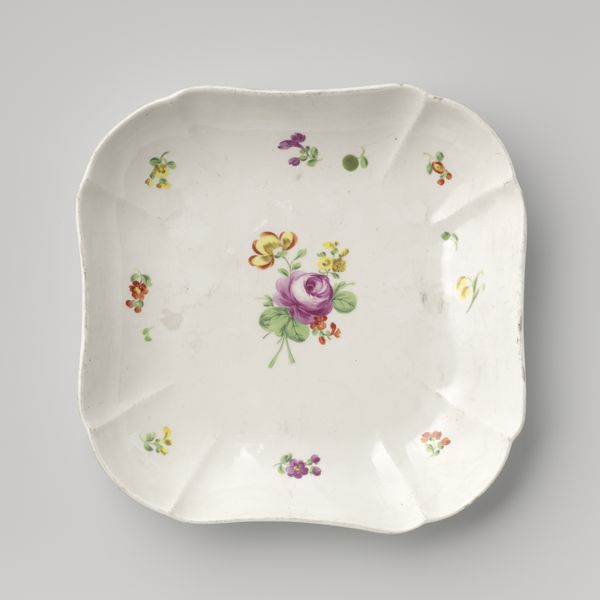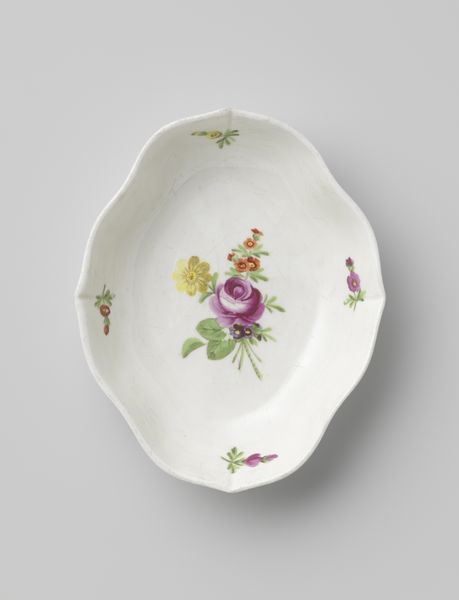
Dimensions: height 3.3 cm, diameter 25 cm, diameter 13 cm
Copyright: Rijks Museum: Open Domain
Curator: Here we have a plate with a bouquet and flower sprays made by the Kaiserliche Porzellanmanufaktur sometime between 1800 and 1849. The piece utilizes both ceramic and porcelain. Editor: It has a fragile and delicate quality. The floral design gives it a sense of classic, almost sentimental charm. Curator: Right, porcelain production like this wasn't merely about functionality; it reflected social aspirations. Tableware became a vehicle to communicate status through elaborate meals and hosting rituals among the upper classes. Editor: Agreed, but let's consider the means. The material itself—porcelain—what a story of extraction, labor, and skill! We easily forget the sheer intensity of the work, from mining the raw materials to the artistry of painting those tiny floral sprigs, each stroke contributing to the final product's social value. Curator: True. The arrangement of the flowers—a more significant bouquet in the center with delicate surrounding sprays—mimics garden aesthetics and embodies a cultural taste promoted and consumed by an elite circle during the Rococo revival of this time. Editor: And what do these kinds of decorations mask? It evokes nature while conveniently ignoring the ecological costs of both producing the porcelain and maintaining these idealized natural visions in curated gardens. Consumption aestheticized is still consumption. Curator: Indeed. These decorative objects become active agents in circulating class values, instructing proper visual consumption for the time, through domestic aesthetics. Editor: In considering the production of the work then we should not only appreciate the craftsmanship but acknowledge also all of the labor embedded in it and its connections to larger economic and social structures of the time. Curator: So next time, instead of just admiring the plate’s design, also contemplate the social and economic history baked right into its material. Editor: A potent reminder to look closely, past the painted surface to all that went into bringing beauty to the table.
Comments
No comments
Be the first to comment and join the conversation on the ultimate creative platform.
